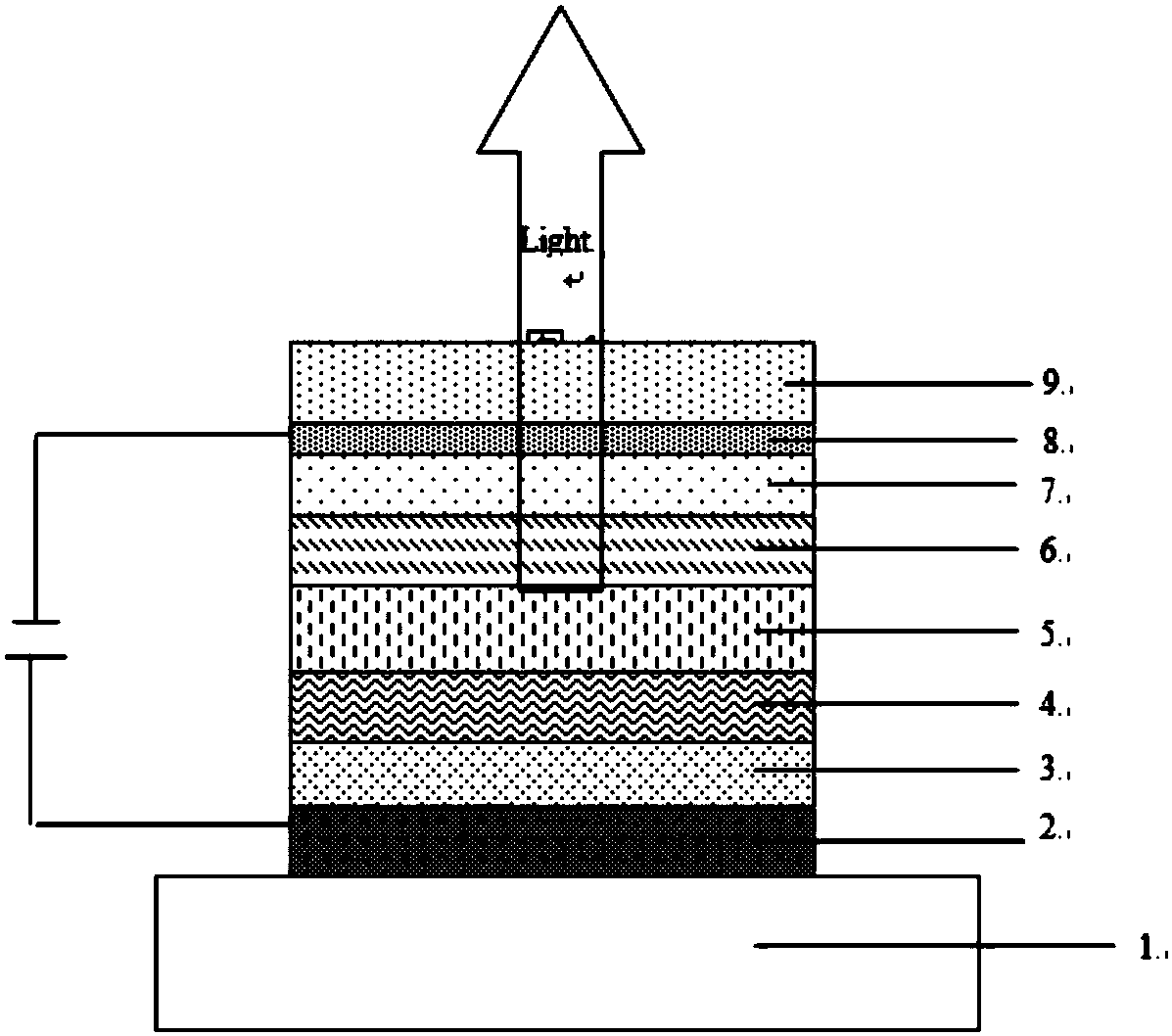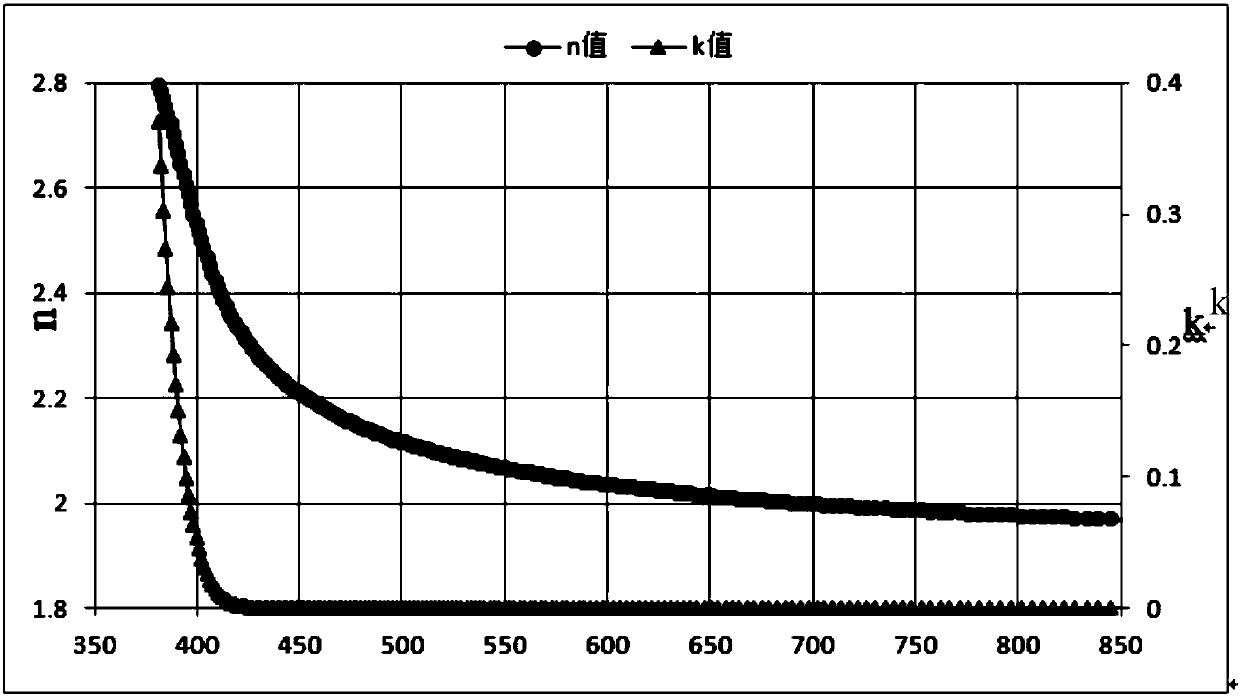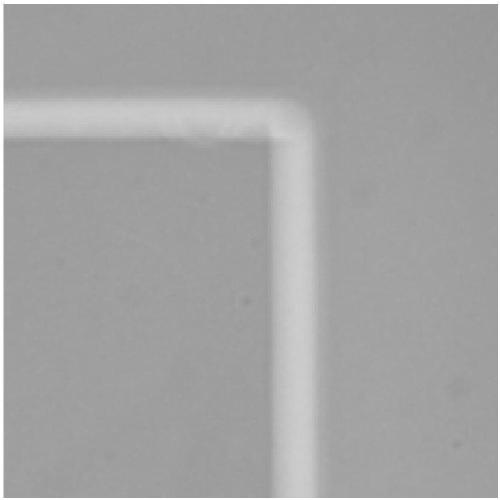Organic compound containing pyridine and application thereof in OLED device
An electroluminescent device and organic compound technology, applied to organic electroluminescent devices, in the field of organic compounds containing azabenzene, can solve the problems affecting the angular distribution of OLED radiation spectrum and complex manufacturing process, etc.
- Summary
- Abstract
- Description
- Claims
- Application Information
AI Technical Summary
Problems solved by technology
Method used
Image
Examples
Embodiment 1
[0066] intermediate Synthesis
[0067] (1) with R 1 , R 2 or R 3 When expressed as a structure of general formula (2) as an example,
[0068]
[0069] 1) In the three-necked flask, feed nitrogen, add raw materials B, I-Ar 4 , sodium hydride, cuprous iodide and o-phenanthroline were dissolved in 1,3-dimethyl-2-imidazolidinone, and stirred for 30 hours. After the reaction, water was added and extracted with dichloromethane. The organic layer was washed with anhydrous Dry over sodium sulfate, rinse with a mixture of petroleum ether and ethyl acetate as eluent, and purify by column chromatography to obtain intermediate M;
[0070]
[0071] 2) Under a nitrogen atmosphere, weigh the intermediate M and dissolve it in tetrahydrofuran, and then dissolve the Br-Ar 2 -B(OH) 2 and tetrakis(triphenylphosphine)palladium were added, the mixture was stirred, and saturated potassium carbonate aqueous solution was added, and the mixed solution of the above-mentioned reactants was ...
Embodiment 2
[0103] Embodiment 2: the synthesis of compound 1:
[0104]
[0105] In a 250mL three-necked flask, nitrogen was introduced, 0.01mol of intermediate A1, 150ml of DMF, 0.03mol of intermediate B2, 0.0002mol of palladium acetate were added, stirred, and then 0.02mol. L -1 K 3 PO 4 The aqueous solution was heated to 150°C, refluxed for 24 hours, sampled and plated, and the reaction was complete. Cool naturally, extract with 200ml of dichloromethane, separate layers, dry the extract with anhydrous sodium sulfate, filter, rotate the filtrate, and purify through a silica gel column to obtain intermediate 1 with a HPLC purity of 99.2% and a yield of 53.6%.
[0106] Elemental analysis structure (molecular formula C 16 h 9 Cl 2 N 6 ): theoretical value C, 56.16; H, 2.65; N, 20.47; Cl, 20.72; found value: C, 56.22; H, 2.69; N, 20.49; ESI-MS(m / z)(M + ): The theoretical value is 341.02, and the measured value is 341.05.
[0107] In a 250mL three-necked flask, nitrogen was in...
Embodiment 3
[0109] Embodiment 3: the synthesis of compound 6:
[0110]
[0111] The preparation method of compound 6 is the same as that of Example 2, except that intermediate B2 is replaced by intermediate B1. Elemental analysis structure (molecular formula C 38 h 23 N 9 ): theoretical value C, 75.36; H, 3.83; N, 20.81; test value: C, 75.39; H, 3.85; N, 20.85. ESI-MS(m / z)(M + ): The theoretical value is 605.21, and the measured value is 605.29.
PUM
| Property | Measurement | Unit |
|---|---|---|
| thickness | aaaaa | aaaaa |
Abstract
Description
Claims
Application Information
 Login to View More
Login to View More - R&D
- Intellectual Property
- Life Sciences
- Materials
- Tech Scout
- Unparalleled Data Quality
- Higher Quality Content
- 60% Fewer Hallucinations
Browse by: Latest US Patents, China's latest patents, Technical Efficacy Thesaurus, Application Domain, Technology Topic, Popular Technical Reports.
© 2025 PatSnap. All rights reserved.Legal|Privacy policy|Modern Slavery Act Transparency Statement|Sitemap|About US| Contact US: help@patsnap.com



